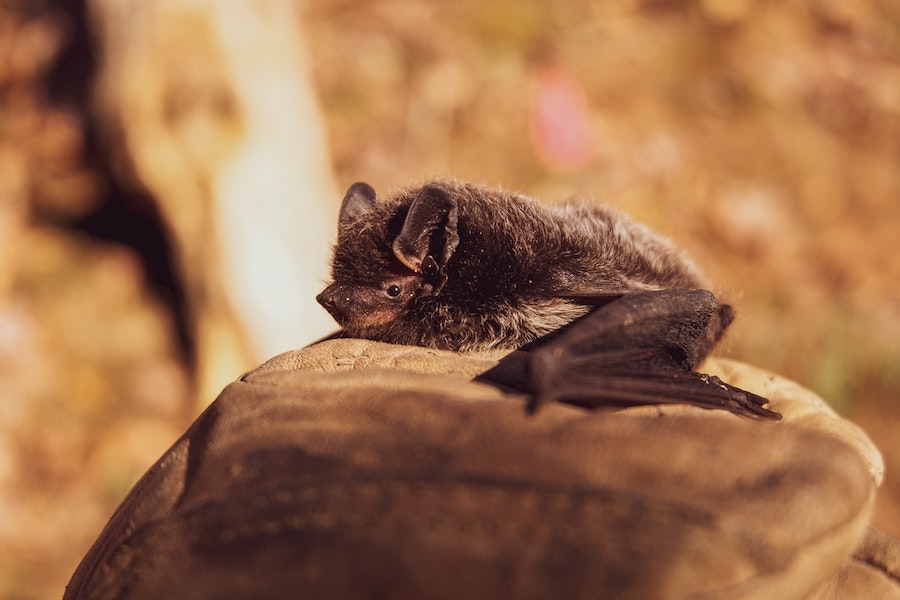Bats, often associated with myths and mysteries, are remarkable creatures that play crucial roles in ecosystems worldwide. However, they can also become unwitting guests in our homes, causing a blend of fascination and concern. Understanding how bats gain access to houses is not only a matter of human comfort but also essential for the protection of these valuable animals. In this article, we delve into the intriguing question of “How do bats get in the house?” as we explore their motivations, behaviors, and the measures we can take to peacefully coexist with these winged visitors.
How Do Bats Get In The House?
Bats can enter houses through various means, often seeking shelter or suitable roosting spots. Here are the primary ways in which bats gain access to homes:
- Gaps and Cracks: Bats are exceptionally skilled at squeezing through small openings. They can infiltrate gaps in roofs, walls, and soffits as narrow as 3/8 inch wide.
- Vents and Chimneys: Bats may enter through attic vents, louvers, or uncapped chimneys. These openings provide easy access to the sheltered spaces within a house.
- Open Windows and Doors: Bats are opportunistic and may fly inside through open windows or doors, especially during the evening when they are active.
- Roof Eaves and Soffits: Bats can find their way into houses through gaps in roof eaves or soffits, where they can roost in the dark and secure interior spaces.
- Attic Access Points: Attic doors or openings for utilities such as plumbing and wiring can be potential entry points for bats.
- Structural Damage: In some cases, bats exploit existing structural damage to gain access. They may enlarge gaps or openings over time.
Why Bats Enter Houses?
Bats enter houses for various reasons, driven by their survival instincts and need for shelter. Understanding these motivations can help homeowners address bat-related issues effectively. Here are the primary reasons why bats seek refuge in houses:
- Protection from Predators: Houses provide bats with secure, predator-free environments. Bats are vulnerable to predation by owls, hawks, and other nocturnal hunters, so they seek shelter in enclosed spaces to avoid these threats.
- Roosting and Breeding Sites: Many bat species use houses as roosting sites, especially during the maternity season when females give birth and raise their young. Attics and other secluded areas in homes mimic natural roosting spots like caves and hollow trees.
- Ideal Temperature Conditions: Bats are ectothermic, meaning they rely on external heat sources to maintain their body temperature. Houses often offer stable and warm environments, which are attractive to bats, particularly during colder seasons.
- Proximity to Feeding Grounds: Houses situated near suitable foraging areas, such as ponds, lakes, or open fields, may attract bats looking for a place to rest between feeding flights.
- Accidental Entry: Sometimes, bats enter houses unintentionally while searching for insects around outdoor lights. They may follow prey indoors and become disoriented, leading to accidental entry.
- Seasonal Behavior: Bat behavior can change seasonally. Some bat species migrate and use houses as stopover points during their journey. Others may overwinter in homes to escape harsh weather conditions.
- Historical Roost Sites: If a house was previously inhabited by bats or is near a known bat roosting site, it may continue to attract bats year after year.
Legal And Environmental Considerations
Legal and environmental considerations are crucial when dealing with bats in or around your home. Bats are protected by various laws and regulations due to their ecological importance and the vital role they play in maintaining healthy ecosystems. Here are key legal and environmental considerations:
Many bat species are protected by federal, state, or local laws. Killing, capturing, or harming bats can lead to severe legal consequences, including fines and penalties. It’s essential to check the specific regulations in your area before taking any action against bats.
Most laws prohibit bat removal or exclusion during the maternity season when young bats are present (usually in spring and early summer). It’s important to be aware of these seasonal restrictions to avoid unintentionally harming bat pups.
Due to the legal protections surrounding bats, it’s advisable to seek professional help when dealing with bat infestations or exclusions. Wildlife experts and pest control professionals experienced in bat removal can ensure that actions are taken in compliance with the law.
Bats are crucial for pest control and pollination, benefiting both agriculture and the environment. Some species are also endangered or threatened. Responsible bat removal should prioritize their well-being and conservation. Consider relocating bats using humane exclusion methods to suitable bat-friendly habitats.
Bats rely on a variety of habitats, including caves, trees, and buildings. Preserving natural habitats and providing artificial roosting sites like bat houses can help mitigate conflicts between bats and human structures.
Prevention And Control Measures
Preventing and controlling bat infestations in homes requires a delicate balance between respecting the ecological importance of bats and ensuring human comfort and safety. Here are some effective prevention and control measures:
- Sealing Entry Points: The first step in preventing bats from entering your home is to identify and seal potential entry points. Inspect your house for gaps, cracks, and openings in the roof, walls, vents, and chimney caps. Use appropriate materials like caulk, mesh screens, or foam insulation to seal these gaps. Be meticulous, as bats can squeeze through remarkably small openings.
- Installing Bat Exclusion Devices: To evict bats that are already roosting in your home, consider using bat exclusion devices. These allow bats to exit the house but prevent them from re-entering. Install these devices over known entry points, ensuring they are only used during the appropriate times of the year, usually outside of the maternity season when young bats are present.
- Professional Assistance: Bat removal and exclusion can be complex and should often be handled by professionals experienced in humane and legal bat control. They will know how to safely remove bats, seal entry points, and ensure compliance with local laws protecting bats.
- Creating Bat-Friendly Alternatives: Encourage bats to roost in designated areas by installing bat houses in your yard. These structures provide suitable roosting sites and can help redirect bats away from your home. Make sure to place bat houses in locations with adequate sun exposure and away from heavy human activity.
Conclusion
In conclusion, understanding how bats enter homes and the reasons behind their presence is essential for responsible cohabitation. Bats, protected by laws due to their ecological significance, must be treated with care and respect. Preventing bat infestations through sealing entry points, using humane exclusion methods, and installing bat houses can help strike a balance between human comfort and ecological preservation. By following legal regulations, fostering bat-friendly environments, and supporting conservation efforts, we can coexist with these remarkable creatures, benefiting both our homes and the broader ecosystem they contribute to.
FAQ’s
Are Bats Dangerous To Have In My House?
Bats themselves are not inherently dangerous, but their presence can pose health risks due to their droppings (guano) and potential for transmitting diseases like rabies. It’s important to take steps to prevent infestations and seek professional help if bats are in your home.
How Can I Tell If I Have Bats In My House?
Signs of a bat infestation include the presence of bat guano, strange noises (scratching or chirping), a strong, musty odor, and sightings of bats inside your home, especially at dusk or dawn.
Can I Remove Bats From My House On My Own?
Removing bats from your home should be handled by professionals. Many bat species are protected by law, and improper removal can harm both the bats and result in legal consequences.
What Should I Do If I Find A Bat In My Living Space?
If you find a bat in your living area, avoid direct contact and open windows or doors to allow it to exit. If it doesn’t leave, or if you suspect exposure to a bat bite, contact a healthcare provider and seek medical advice regarding rabies exposure.
How Can I Prevent Bats From Entering My House?
Preventing bat entry involves sealing gaps and openings in your home, such as roof vents, cracks, and chimneys. Additionally, consider installing bat exclusion devices over known entry points and providing bat-friendly alternatives like bat houses to redirect them away from your living spaces.








